St. Louis Colored

St. Louis, circa 1940. Notice the bell tower. Photo By Thos E. Sims, Jr. Source: Insurance Analysis and Permanent Record – Property of Loudoun County School Board: Garrett Insurance Company (Fireman's Fund Insurance Company), Leesburg, Virginia. October, 1940. (Blue Insurance Binder, EWP Archives Box 11)
Edited 8/23/2023 See also Banneker for post-1948 history.
Picture taken 9/16/2016 by Larry Roeder. According to Lott Bolden, the current owner, the old schoolhouse is now part of the larger home structure. See Vertical files for historical photographs.
Opening and Closing
- April 21, 1877: Charles Squire (perhaps Esquire) and Lucy Robinson sold the land for the school house for $27.50, about $625 in 2017 currency. It was purchased by School District 3, later the Mercer District. Original building was also constructed in 1877 as a one room frame building for a cost of $350. Source: Report of Survey Committee on Long Range Planning for Loudoun County, Jan, 1940. Location: EWP folder 2.2 County School Board, 1918-1952.
- Closed 1948 when Banneker was erected. Now serves as a private home.
Physical and Map Location
During Segregation, the St. Louis colored school was in the Mercer School District.
Location of School House in 2016. Address: Hamlin School Lane, 35430.
See also Banneker for post 1948 history.
Petitions
- February 9, 1931: The patrons of the St. Louis School and its then instructor Laura Cook, made a petition to the School Board to alleviate overcrowding. In a letter from Ms. Cook, she noted that they had an enrollment of 71 students, with more to come, so many students “the crowded conditions makes it impossible for me to give the children as much attention as they need and naturally they are not getting as much out of the work as they should.” The accompanying document from the patrons noting that “conditions are not sanitary with three scholars at each desk. We are asking if the school board will give us an extra room an(sic) primary teacher for the next school term.” (Sources: Letter to School Board of February 9, 1931 from Laura Cook and Petition from the Patrons of the Saint Louis Colored School of Feb 10, 1931, LCPS Archives, Petitions Folder) Petition to Expand St. Louis 1931
- 1930-1935: At some point during Ms. Cook's tenure, the Parents and Teacher League of St. Louis and Cook petitioned the School Board for an expansion of the school house by one room, in order to manage a serious overcrowding problem. Unfortunately, the petition was not dated; but it did show that the one room school house averaged 64 children a month between September and February in enrollment, though the average attendance was only 52, still a great many children for one room, especially as the grades ranged from 1 through 7. (Source: Undated Petition to the School Board from the Parent and Teacher Association of St. Louis, EWP Archives, Petitions Folder). Copy of Petition for Space.
- By 1940's there were sometimes 50 children in the one-room school house, though the older ones attended school in a classroom set up in Phil McQuay's store. Scheel, E. (1980, September 25). St. Louis Dates to late 1800’s. Loudoun Times Mirror, pp. D-12.
- February 6, 1946 A terse memo continued the position that Grant in Middleburg was stressed. From the PTA and Community League of the Grant School the memo offered an ardent argument for avoiding building a new building in Saint Louis; instead to build a school in Middleburg that would service Saint Louis. Middleburg felt that the roads in Saint Louis were unsatisfactory and indeed impassable in winter. They felt Saint Louis was swamps, requiring much drainage. There were also no stores, theatre or denominational churches and in the opinion of the authors a lacking of “Negro leadership and Negro wealth.” They also felt that a school’s surroundings ought to be able to “offset the decoy of youngsters,” and that Saint Louis didn’t provide that. They also saw a lack of clinical facilities or a physician who could arrive quickly. Interestingly, they also opined that “in this atomic age,” the school would not improve the “panorama of our colored and white citizens.” Finally, they felt Saint Louis little opportunity for boarding teachers. Having made those points, they argued for an alternative site, that of William N. Hall at the historically Black community of Maxville. Grant School Petition of 1946 Location: EWP Petitions Folder
- March 31, 1948: The School Board realized how conditions had deteriorated and purchased 19 acres in St. Louis and Built Banneker, a six room facility, which still stands. The original student body consisted of 185 students from the two schools in St. Louis, the two in Middleburg and the Mountville (Marble Quarry) School on Sam Fred Lane. The children and faculty of St. Louis were transferred to Banneker. The first Principle was Augustus Lacey from Dinwiddie County. Source EWP archives. The name came from Benjamin Banneker, 18th century mathematician and astronomer who had helped define the borders of Washington, DC.
Transportation
- January 21, 1932: Laura Cook and patrons of the school petitioned “to have the road entering the school grounds improved. It is in a terrible condition, making travel upon it almost impossible. If possible, we should like very much to get help from the School Board. We are willing to contribute labor towards the work.” Signed by Cook and eight patrons. Source: Petition to School Board, Jan 21, 1932, LCPS Archives, Petitions Folder. 1932 Road Improvement Petition. It’s believed that students who lived within 3 miles of a school could walk from their home to school. The figure at https://edwinwashingtonproject.org/admin/item/31259 shows the location of the school with a circle representing the area from which students could have walked, back and forth from their home to the school. Travel by horse was also used and could have extended the travel distance.
History
(See also article by Eugene Scheel from 1980 on history of the village) St Louis LTM article 25 Sept 1980
1900. Township had about 100 citizens. Source: Scheel, E. (1980, September 25). St. Louis Dates to late 1800’s. Loudoun Times Mirror, pp. D-12.
In 1938/39, the number designation for St. Louis Colored was #44. Source 1.7 1939 Socio Econ Study.
Instructors
- 1917/18: J.A. Smith One year of experience.
- 1923/24 – 1925/26 Academic Years. Terry R. Gaskins, born March 15, 1903, was the instructor, earning $40 a month the first year and $55 for following two years. She lived in the Upperville area and was educated at the Manasass Industrial School. Sources: Term Reports and Teacher Records, EWP Archives.
- 1926/27 – 1927/28. Clarence L. Murray. Murray was 42 years old in 1926 and arrived with 16 years of experience. Murray may have also been assisted by his wife Grace, both from Bull Run Mountain. Source: Term Reports, EWP Archives and Scheel, E. (1980, September 25). St. Louis Dates to late 1800’s. Loudoun Times Mirror, pp. D-12.
- 1928/29 – 29/10. Clarene Coles. Aged 28 when she started and with 6 years of experience. Ms. Coles lived in Washington, DC and was educated at Manassas Industrial School, as well as the Virginia State College for Negroes. Source: Teacher Records, LCPS Archives.
- 1930/31 – 1934/35: Apparently responding to a petition not to appoint the then instructor for the 1930/31 term Petition St Louis 1930 Teacher Hire, in July of 1930, the School Board appointed Laura Evans Cook. At the time, Ms. Cook had no prior teaching experience, though her education was from the Manassas Industrial School. Her salary was $55 a month, to start for instructing grades 1-7. Unfortunately, her salary declined from there to $52.25 a month in 1931/32, $49.50 in 1932/33, $45 in 1933/34 as well as in 1934/35. She was also single, born September 8, 1912 in the Mercer District of Loudoun to Philip Cook, a tinner in Middleburg and Bertha Evans a lady’s maid, formerly of Willisville. Cook was also a Methodist. In addition, she could sing and play piano. In December, 1941, Cook married a horse trainer from Middleburg named Robert Bunn. Sources: (a) Loudoun Times Mirror Staff. (1930, July 10). School Board Holds Its Regular Session. Loudoun Times Mirror, p. 1. (b) Virginia Department of Public Instruction. (1892-1975). Virginia Dept. of Education, Lists of Teachers, 1892-1975. Richmond, Virginia, USA: Virginia Department of Public Instruction/Education, (c) Teacher’s Record for Laura E. Cook, EWP Archives, (d) Birth and Marriage records, Loudoun County, Va. (c) Undated petition from patrons from 1929 likely not to rehire their current instructor for the 1930/31 term. EWP Archives Petitions Folder.
- 1935/36 – 1941/42. Henrietta E. Chapman (Gray by 1937). Born March 30, 1905. Educated at the Manassas Industrial School and Miner Normal in Washington, DC. In 1955 the school merged with Wilson Teachers College to form the “District of Columbia Teachers College.” In 1976, this was incorporated into the University of the District of Columbia Source: Teacher’s Record, EWP Archives.
- 1942/43. Dorris Bolden . Source: Loudoun Times Mirror, Times Staff, School Board (from page 1), Pg. 2 showed colored teachers. April 16, 1942.
- 1943/44 – 44/45. Reverend J.H. Fox. Source: Term Reports, EWP Archives.
- 1945/46. Mrs. Muriel Rogers. Source: Term Reports, EWP Archives.
- 1945/46 – 1946/47. Ms. Lillian C. Holmes. (Apparently, the school had two teachers, perhaps to divide the grades). Source: Term Reports, EWP Archives.
- 1946/47 Mrs. Muriel G. Rogers. Source: Term Reports, EWP Archives
Insurance and Physical Description
1877. Constructed as a one room frame school house for $350.
9/16/2016. According to Lott Bolden, current owner, in an interview with Larry Roeder, the old school house is now part of the larger home structure. Contemporary dry wall covers the old blackboard and hooks for clothing. Also 9/16/2016, According to Dan Dorsey, a resident of St. Louis, he attended this school before serving in World War Two. At the time, the exterior color was yellow, similar to the Yellow School House along the Snickersville Turnpike.
I room school house.
Notice large bell tower on school! Insured by LCPS system in 1923/26 as “colored” school in Mercer District. Source: EWP Archives. (1924-1936). Insurance Record. Purcellville: (Found in EWP Box 11. Black Book with Red Spine and Corners) Page 24/25.
Photo By Thos E. Sims, Jr. Source: Insurance Analysis and Permanent Record – Property of Loudoun County School Board: Garrett Insurance Company (Fireman’s Fund Insurance Company), Leesburg, Virginia. October, 1940. (Blue Insurance Binder, EWP Archives Box 11) This was a one story, one room detached frame building with metal roof on stone foundation. It was heated by a stove, the flue of which was brick of standard construction. In 1940, the insurance agent considered the school in fair condition and approximately 22′ x 34′.
Additional Photographs

Children At St. Louis Colored School, 1930’s approx. Names not yet identified.
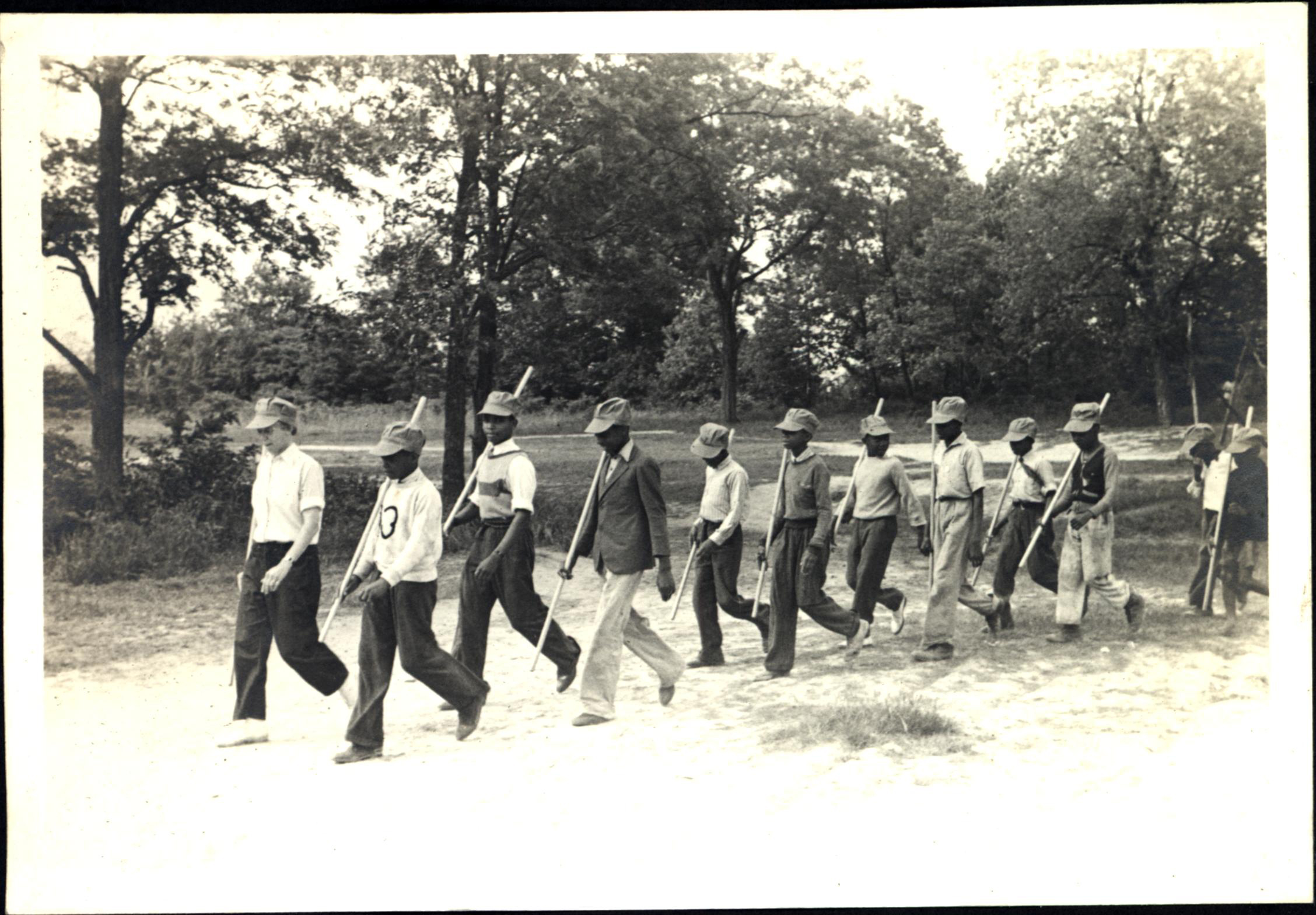
St. Louis Children by Cemetery and School, 1942. Charlotte Noland Land Army. Courtesy Foxcroft School. The land army effort was part of a national program to teach subsistence farming so that commercial farms could be dedicated to feeding the troops during World War Two.
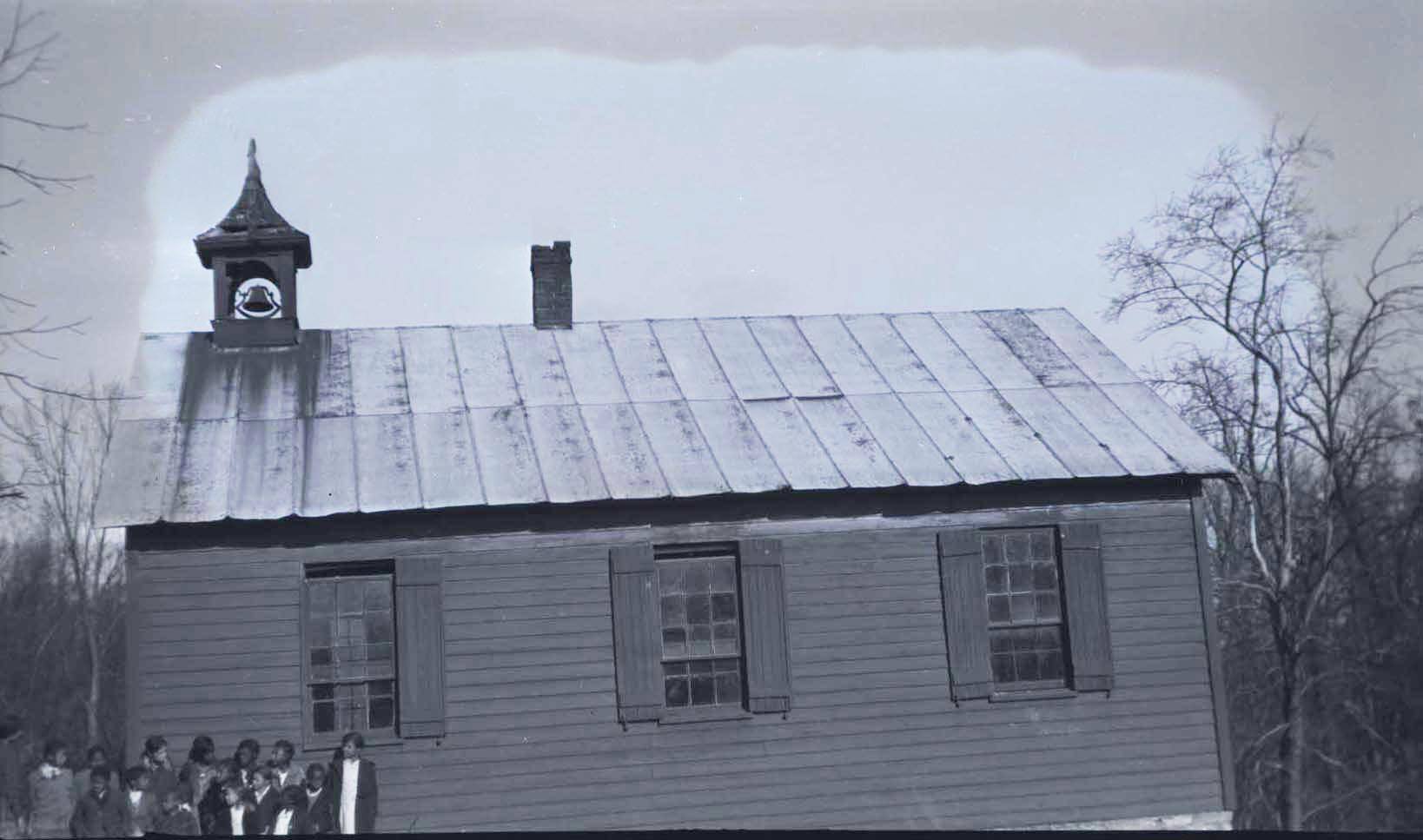
St. Louis 1930s. Notice Bell Tower and shutters.
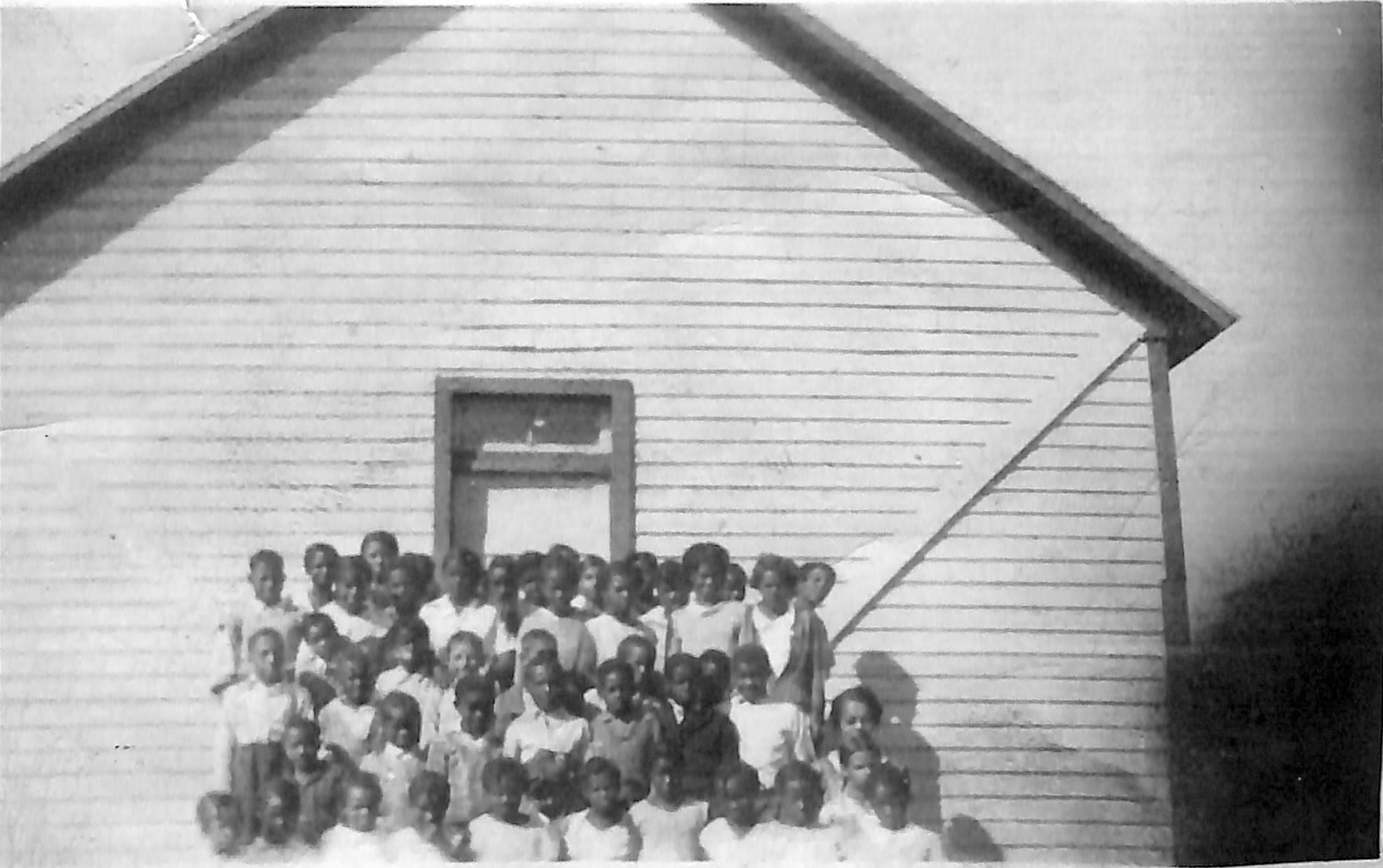
St. Louis Children, 1930's. Courtesy, Phyllis Cook-Taylor
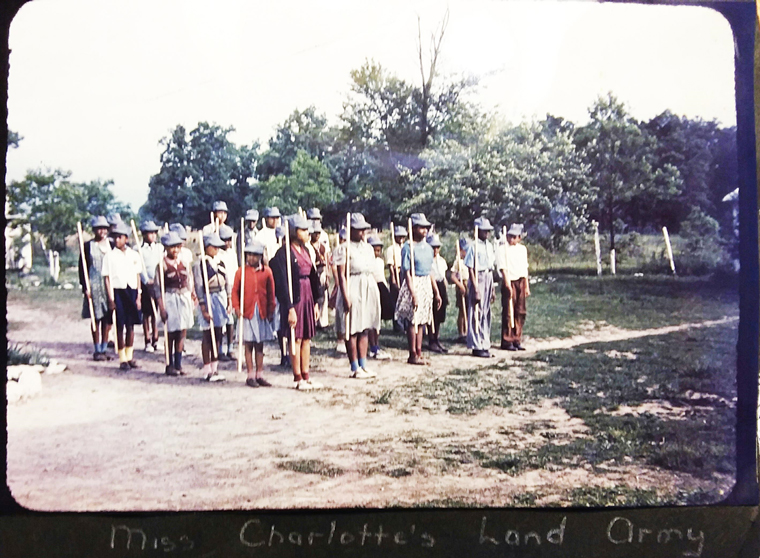
Charlotte Noland Land Army Students Marching. Students from St. Louis, 1942. Courtesy Foxcroft School.
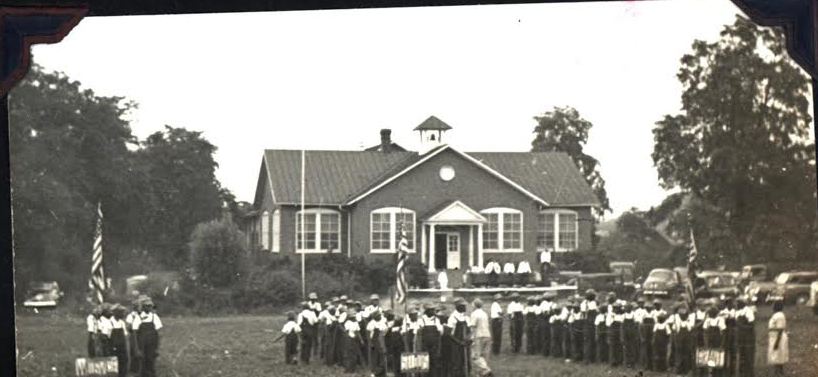
Students from St. Louis and other “colored” schools paraded on the grounds of the Middleburg White School as part of the Foxcroft Land Army program. The same morning, white students also marched on the same grounds. Courtesy of Foxcroft School.
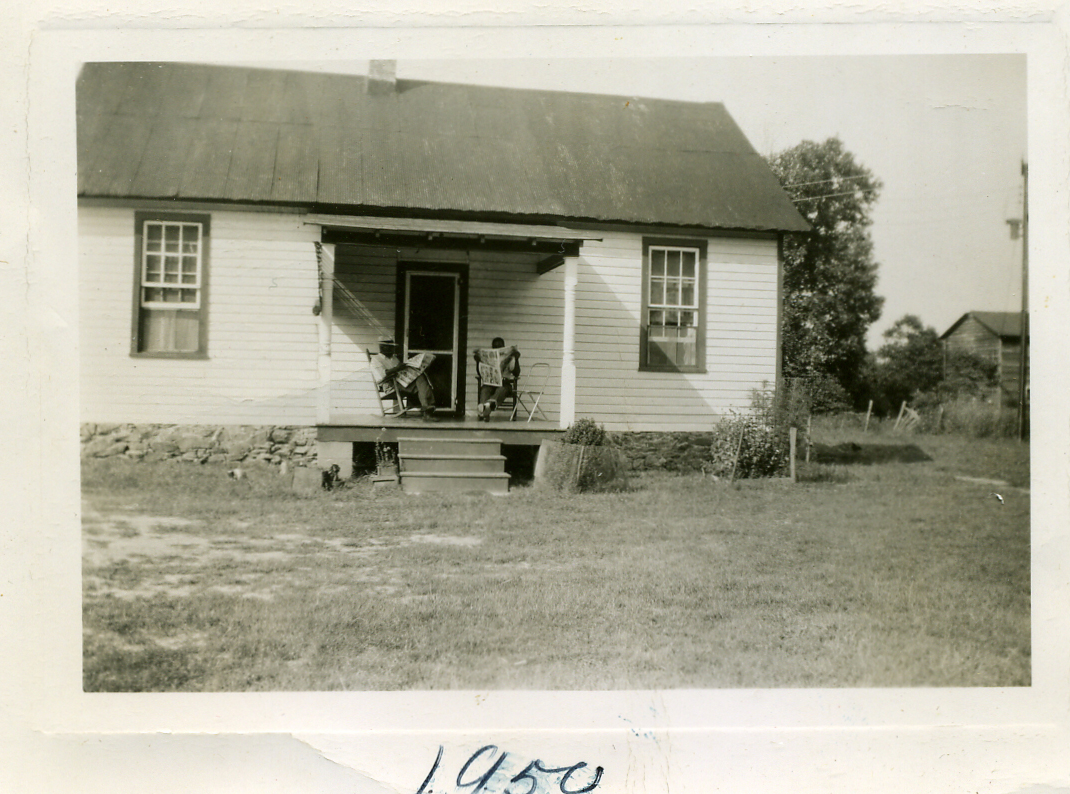
St. Louis School after conversion to private home, 1950’s Courtesy of Lott Bolden, current owner. Notice new side entrance.
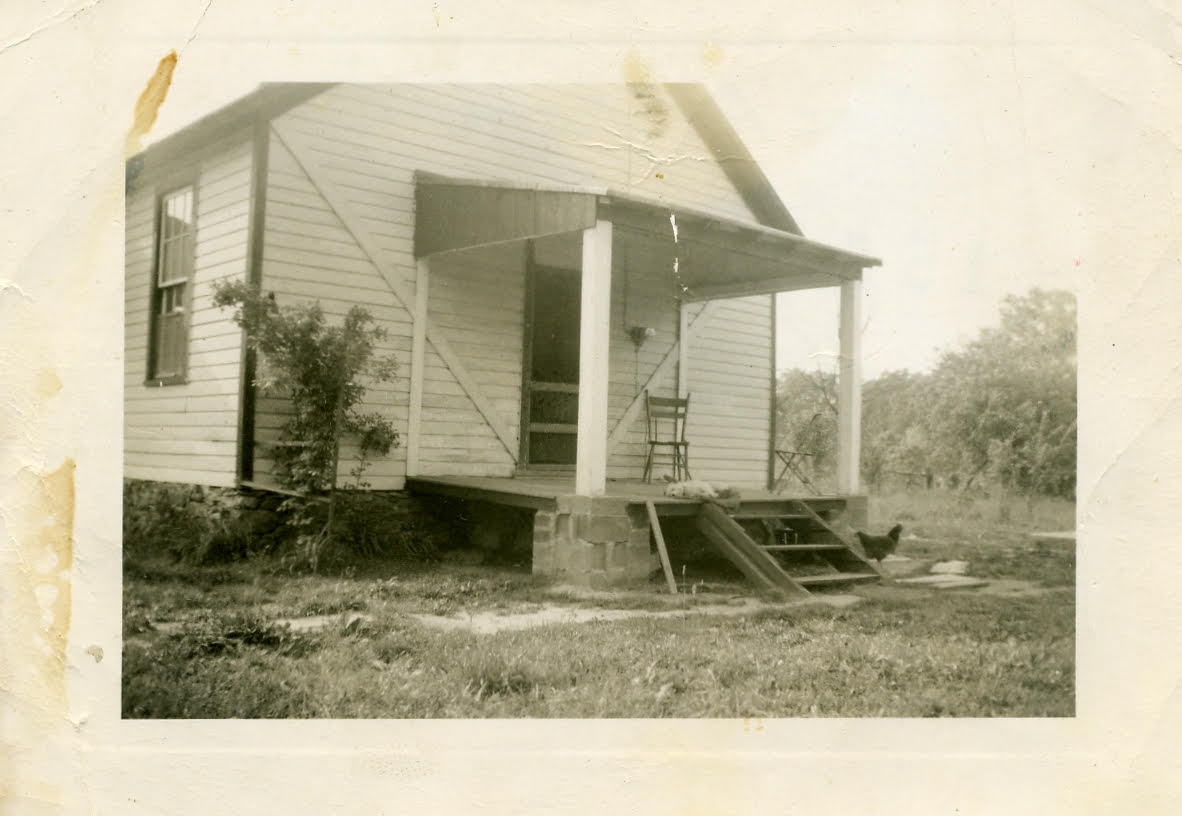
St. Louis Colored School, 1950’s as a private home. Courtesy of Lott Bolden, the current owner. Notice end entrance.